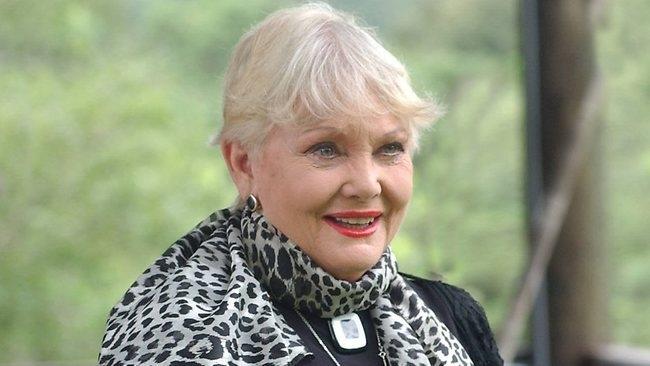Diane Cilento: A Life in the Spotlight
Diane Cilento was born on April 5, 1932, in Mooloolaba, Queensland, Australia. The daughter of Sir Raphael Cilento, a noted medical practitioner, and Lady Phyllis Cilento, a prominent author and advocate for women’s and children’s health, Diane was exposed to a life of public service and intellectual rigor from a young age. Despite her parents’ professional backgrounds, Diane was drawn to the arts, showing a precocious talent for performance.
She attended the National Institute of Dramatic Art (NIDA) in Sydney before moving to the United Kingdom to further her studies at the Royal Academy of Dramatic Art (RADA). Her training at RADA honed her skills and set the stage for a successful career in acting.
Sean Connery: The Iconic James Bond
Sean Connery was born on August 25, 1930, in Edinburgh, Scotland. Before becoming an actor, Connery worked various jobs, including as a milkman, a laborer, and a model. His breakthrough came in 1962 when he was cast as James Bond in “Dr. No.” This role catapulted him to international fame and established him as one of the most iconic actors in cinema history. Connery’s portrayal of Bond was characterized by a unique blend of charm, toughness, and sophistication, making him a favorite among fans and critics alike.
Throughout the 1980s and 1990s, Diane Cilento shifted her focus more towards theatre, where she continued to demonstrate her exceptional talent. She appeared in numerous productions, often receiving critical acclaim for her performances. Her commitment to the craft of acting remained unwavering, and she became known for her dedication and professionalism.
Breakthrough in Acting
Diane Cilento’s breakthrough came in the early 1950s when she began securing roles in British theatre and film. Her striking looks and compelling performances quickly made her a sought-after actress. She gained considerable attention for her role in the 1956 film “Passage Home,” which showcased her ability to handle complex characters with depth and nuance.
Her performance in “The Admirable Crichton” (1957) further cemented her status as a rising star in the film industry. However, it was her portrayal of Molly Seagrim in Tony Richardson’s “Tom Jones” (1963) that earned her international acclaim and an Academy Award nomination for Best Supporting Actress. This role demonstrated her versatility and skill, contributing to the film’s critical and commercial success.
Personal Life and Marriage to Sean Connery
In 1962, Diane Cilento married Scottish actor Sean Connery, who was then rising to fame as James Bond. Their marriage attracted significant media attention and was often scrutinized by the public. Despite the glamour associated with being part of a celebrity couple, their relationship faced challenges, including the pressures of their respective careers and personal differences. They had a son, Jason Connery, who would later follow in his parents’ footsteps to become an actor.
Also Read: Nashville Elite Hockey
The couple divorced in 1973, after more than a decade of marriage. Diane later spoke candidly about the difficulties she faced during this period, shedding light on the often unseen struggles behind the glamorous facade of celebrity life.
Continued Success and Later Career
After her divorce from Connery, Cilento continued to build an impressive career in both film and theatre. In 1975, she delivered a memorable performance in the cult classic “The Wicker Man,” playing the role of Miss Rose. Her portrayal added a layer of mystique and intrigue to the film, which has since become a staple of the horror genre.The couple divorced in 1973, after more than a decade of marriage. Diane later spoke candidly about the difficulties she faced during this period, shedding light on the often unseen struggles behind the glamorous facade of celebrity life.
Throughout the 1980s and 1990s, Diane Cilento shifted her focus more towards theatre, where she continued to demonstrate her exceptional talent. She appeared in numerous productions, often receiving critical acclaim for her performances. Her commitment to the craft of acting remained unwavering, and she became known for her dedication and professionalism.
Writing and Later Life
In addition to her acting career, Diane Cilento was also an accomplished writer. She penned several books, including an autobiography titled “My Nine Lives” published in 2006. In this candid memoir, she recounted her experiences in the film industry, her personal life, and her spiritual journey. The book provided a deeper understanding of her resilience and the complexities of her life beyond the screen.
In the latter part of her life, Cilento returned to Queensland, where she founded the Karnak Playhouse, a unique outdoor theatre in the rainforest near Mossman. This project reflected her enduring passion for the arts and her desire to nurture creative talent. The playhouse became a cultural landmark, attracting performers and audiences from around the world.
Diane Cilento passed away on October 6, 2011, leaving behind a rich legacy of artistic achievement and personal courage. Her contributions to film and theatre, as well as her literary works, continue to inspire and resonate with audiences today.
Career Highlights and Legacy
Beyond James Bond, Connery’s career spanned several decades and included a wide range of roles. He won an Academy Award for Best Supporting Actor for his role in “The Untouchables” (1987) and received critical acclaim for performances in films such as “The Name of the Rose” (1986) and “Indiana Jones and the Last Crusade” (1989). Connery’s versatility and commanding screen presence ensured his place as a legendary figure in the world of film. He passed away on October 31, 2020, leaving behind a monumental legacy that continues to influence actors and filmmakers worldwide.This role demonstrated her versatility and skill, contributing to the film’s critical and commercial success.
In the latter part of her life, Cilento returned to Queensland, where she founded the Karnak Playhouse, a unique outdoor theatre in the rainforest near Mossman. This project reflected her enduring passion for the arts and her desire to nurture creative talent. The playhouse became a cultural landmark, attracting performers and audiences from around the world.The couple divorced in 1973, after more than a decade of marriage. Diane later spoke candidly about the difficulties she faced during this period, shedding light on the often unseen struggles behind the glamorous facade of celebrity life.




